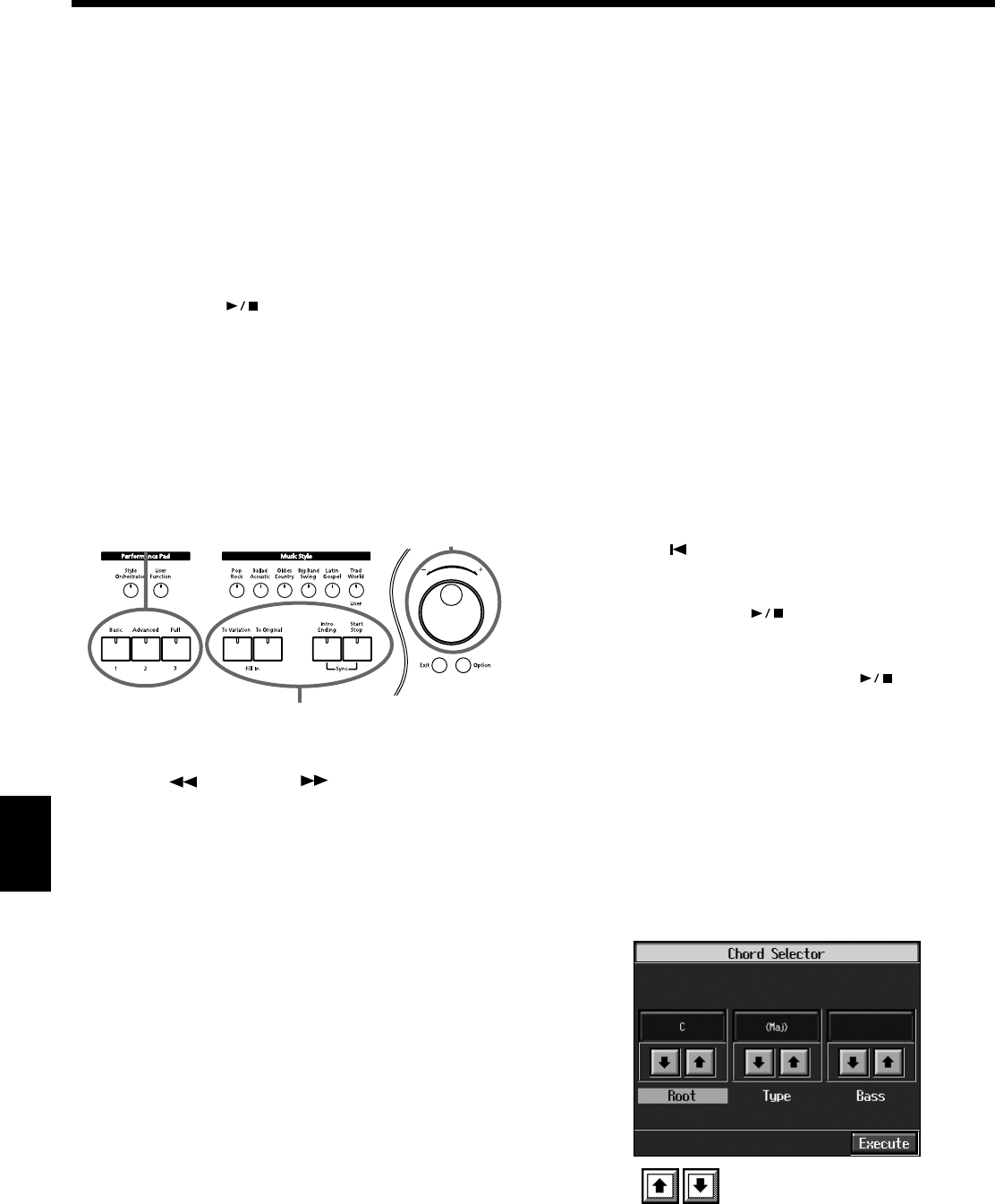
144
Chapter 8 Creating and Editing Songs
Chapter 8
4.
Press the [Exit] button.
You are returned to the Chord Sequencer screen.
5.
Enter the chord progression and the accompaniment
pattern.
Refer to “Inputting Chords with the Chord Sequencer.”
6.
When you have finished inputting all the data, touch
<Execute>.
When storage of the data is complete, return to The
“Composer Menu” screen.
Now, press the [ (Play/Stop)] button, and try
playing the melody along with the accompaniment you
created.
* Songs you’ve created are discarded as soon as you turn off the
power. If you do not want to delete the song, save it to an
external memory or to user memory. Refer to “Saving Songs”
(p. 116).
Inputting Chords with the Chord Sequencer
1.
Use the dial to move the cursor to the input position.
Use the [ (Bwd)] and [ (Fwd)] buttons to move
the cursor one measure at a time.
2.
Enter the chord progression and the changes in the
accompaniment pattern and arrangement.
Just as when performing with Automatic
Accompaniment, press the keys to specify a chord, and
press a button to select the accompaniment pattern (p.
68). You can change the Style Orchestrator with the
Performance Pads (p. 69).
3.
Touch <Ins> once to insert one measure before the
measure where the cursor is currently positioned.
If you touch <Del>, the measure where the cursor is
currently positioned is deleted, while the measures that
follow are moved forward.
To remove what you have input, move the cursor to the
position with input you want to delete, then touch
<Clear>. This deletes the entered setting.
→
You can only insert an intro at the beginning of a song. When
you add an intro, the number of bars corresponding to the
length of the intro is inserted automatically.
Functions That Can Be Assigned to the Pedals
and the Performance Pads
→
For instructions on assigning functions, refer to “Assigning
Functions to Pedals and Performance Pads (Pedal Setting/
User Functions)” (p. 167).
• Inputting a short Intro and Ending
Assign “Intro 2/Ending 2" to a pedal or pad.
• Inputting a “Variation” or “Original” without a Fill-In
Assign “Original/Variation” to a pedal or pad.
• Using the keyboard to input slash chords (such as Fm/C)
Assign “Leading Bass” to a pedal or pad.
• Inputting a break somewhere within the song
Assign “Break” to a pedal or pad.
• Insert half fill-ins (fill-ins lasting half a measure)
Assign “Half Fill In” to a pedal or pad.
Check the Accompaniment You Inserted
Here’s how to play back as much of the accompaniment as
you have input.
1.
Press the [ (Reset)] button to return to the
beginning of the song.
2.
When you press the [ (Play/Stop)] button, the
performance is played back.
3.
Playback stops when you press the [ (Play/Stop)]
button once more.
■
Inputting Chords without
Playing the Keyboard
You can use <Chords> at the bottom left of the Chord
Sequencer screen to specify chords on the screen.
1.
At the Chord Sequencer screen, touch <Chords>.
A screen like the one shown below appears.
fig.d-chordinput.eps_50
2.
Touch in each to specify the chords.
3.
Touch <Execute> to enter the chord.
You are returned to the Chord Sequencer screen.
Change the accompaniment arrangements
Move the cursor
Select the accompaniment pattern (Division)
KR117_r_e.book 144 ページ 2005年11月8日 火曜日 午後4時20分


















